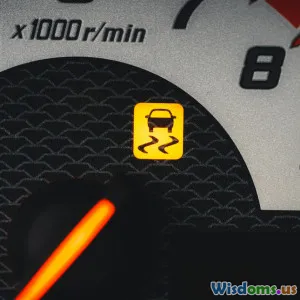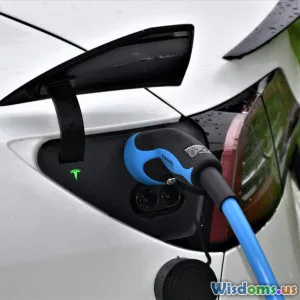
The Future of Fleet Safety Predicting Risks Before Drivers Make Errors
9 min read Explore how advanced technologies predict and prevent driver errors, revolutionizing fleet safety for a safer future on the roads. (0 Reviews)
The Future of Fleet Safety: Predicting Risks Before Drivers Make Errors
Fleet safety has historically hinged on reactive measures — analyzing accidents after they occur and implementing driver training or policy changes to prevent repeats. However, as technology surges forward, the paradigm is shifting toward proactive approaches. The future of fleet safety lies in predicting risk factors before drivers even make errors, ushering in a new era where accidents can be averted almost before they happen.
In this comprehensive article, we'll explore how data analytics, artificial intelligence (AI), telematics, and other technologies combine to predict driver risk, how fleets integrate these innovations, and what this means for the entire transportation industry.
Introduction: The High Cost of Fleet Safety Challenges
Globally, commercial vehicles account for a disproportionate number of traffic accidents, injuries, and fatalities. According to the National Highway Traffic Safety Administration (NHTSA), large trucks were involved in nearly 475,000 crashes in the U.S. alone in 2021, resulting in 5,600 fatalities. Human error is cited in nearly 94% of these accidents.
Traditional safety programs focus on training sessions, manual monitoring, and compliance checks, but the cost of accidents remains high — financially, operationally, and morally. What if companies could foresee risky behavior or hazardous driving conditions before they culminate in an incident?
That's the promise of predictive fleet safety.
Understanding Predictive Fleet Safety: Beyond Reactive Management
Where conventional fleet safety is reactive—responding to accidents and reports—predictive safety uses technology to anticipate and mitigate risks. It employs comprehensive data collection from vehicle sensors, driver behavior, environmental factors, and vehicle maintenance metrics, applying advanced analytics to forecast where risks are most likely to emerge.
For example, a sudden spike in hard braking, erratic lane changes, or excessive speeds can signal an increased crash risk. Similarly, weather patterns, heavy traffic congestion, or mechanical warnings are factors woven into predictive models.
Technologies Driving Predictive Risk Assessment
1. Telematics and Real-Time Data Collection
Telematics systems gather extensive data regarding vehicle location, speed, acceleration, braking patterns, and more. When equipped with sensors and GPS units, fleets continuously monitor operational conditions. This live data forms the backbone of predictive safety models.
Example: UPS’s ORION system analyzes telematics data across thousands of vehicles daily, optimizing routes to minimize risk exposure and fuel consumption, reportedly saving millions annually.
2. Artificial Intelligence and Machine Learning
AI models engrossed in machine learning analyze vast datasets to uncover subtle patterns undetectable to humans. Over time, these algorithms learn to identify driver behaviors or situations that typically precede accidents.
In a study by Deloitte, AI-driven predictive analytics models successfully identified high-risk drivers with over 85% accuracy, allowing preemptive interventions.
3. Driver Behavior Analytics
Advanced software uses video streams from in-cab cameras alongside telematics data to scrutinize driver alertness, distraction levels, yawning frequency (indicative of fatigue), and head movements.
For instance, Lytx DriveCam offers real-time driver coaching, warning drivers when risky behavior occurs and alerting fleet managers, fostering immediate correction before incidents.
4. Environmental and Contextual Integration
Integrating external data such as weather conditions, traffic congestion, and roadwork informs risk prediction with environmental context. A sudden rainstorm increasing braking distances can be flagged to alert drivers in real-time.
5. Predictive Maintenance
Vehicle malfunctions often lead to accidents. Predictive analytics assess maintenance data to forecast component failures before breakdowns occur, minimizing the chances that mechanical issues cause unsafe scenarios.
Implementing Predictive Safety: Real-World Applications
Case Study 1: Ryder System’s Use of AI for Driver Risk Prediction
Ryder leveraged AI algorithms analyzing historic incident data combined with telematics to profile drivers most likely to commit unsafe maneuvers. By providing tailored coaching and incentive programs to these drivers, Ryder saw a 15% drop in accident rates within two years.
Case Study 2: Shell Fleet Solutions’ Multi-Factor Analytical Model
Shell integrates telematics, driver behavior, and environmental inputs into a single dashboard that predicts risk on each trip segment. Fleet managers receive alerts about high-risk scenarios allowing dynamic route adjustments.
Benefits of Predictive Fleet Safety
-
Reduction in Accidents and Injuries: Early identification of risky driving patterns reduces collisions.
-
Lower Operating Costs: Fewer accidents mean fewer insurance claims, legal liabilities, and vehicle repairs.
-
Improved Driver Coaching: Targeted intervention programs quickly remediate risky behaviors.
-
Compliance Assistance: Automated safety documentation supports regulatory adherence.
-
Enhanced Reputation: Commitment to cutting-edge safety technology strengthens fleet market position.
Challenges and Considerations in Predictive Fleet Safety
Data Privacy and Driver Acceptance
Driver monitoring can trigger privacy concerns. Transparency about data use and involving drivers in safety programs improves acceptance.
Integration Complexity
Merging diverse data sources into coherent predictive systems requires significant IT investment.
False Positives and Model Limits
Analytics models may occasionally flag safe drivers or miss emerging risks. Continuous model training and validation are essential for accuracy.
Cost Barriers for Small Fleets
Advanced predictive systems can be costly upfront, posing financial hurdles for smaller operators.
The Road Ahead: Innovations Shaping Predictive Fleet Safety
Edge Computing and 5G Connectivity
Deploying computing power within or near vehicles using edge computing reduces latency in alert systems. Combined with 5G, real-time, high-fidelity data transfer becomes feasible even in remote regions.
Integration with Autonomous Driving Assist Systems
Predictive safety will synergize with autonomous features like automatic emergency braking or lane-keeping, collaboratively anticipating and mitigating risks.
Behavioral Psychology and Gamification
Incorporating psychological principles and gamified feedback loops encourages proactive driver engagement with safety programs.
Regulatory Trends
Governments are increasingly promoting mandates or incentives for advanced safety technologies, likely accelerating adoption.
Conclusion: Proactive Safety as the Fleet of Tomorrow’s Imperative
The transition from reactive safety management to predictive risk anticipation marks a profound leap forward in fleet safety. Through harnessing telematics, AI, and comprehensive data integration, fleets are empowered to foresee dangers before drivers make errors, preventing accidents rather than simply responding to them.
Embracing these technologies is more than a competitive advantage; it's a moral and economic imperative to safeguard lives and assets. As predictive fleet safety continues evolving, the transportation industry is steering toward a future where crashes are no longer inevitable but preventable incidents stopped in their tracks by foresight and innovation.
Take Action
Fleet managers and transportation stakeholders should begin assessing their readiness for predictive safety technologies today. Start by auditing existing data collection capabilities, engage with tech providers, and foster a culture of safety innovation among drivers. The road to zero accidents is paved with prediction, and the time to invest is now.
Rate the Post
User Reviews
Popular Posts
















